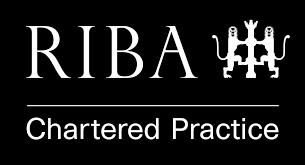Unauthorised work
Understanding Listed Building Offences and Enforcement
Engaging in the following actions without obtaining listed building consent constitutes a criminal offence:
- demolishing a listed building,
- altering or extending it in a way that impacts its special architectural or historic character.
This legal requirement applies to both the individuals carrying out the work and those instructing them. Violating these regulations can result in significant fines and/or imprisonment. In cases where works are conducted without consent, enforcement measures may be taken to restore the building to its original state and ensure compliance with conditions specified in the listed building consent.
Listed building enforcement actions can be pursued without a time limit, emphasising the importance of adhering to regulatory procedures. Failure to secure consent often surfaces during property transactions, potentially impeding the sale until unauthorised alterations are rectified.

Purchasing a property with unauthorised works may expose you to liability for any associated listed building enforcement actions. Addressing these issues promptly is essential to avoid complications and ensure compliance with preservation regulations.
What is unauthorised work?
Unauthorised work refers to any alterations or construction done on a listed building without the necessary listed building consent or planning permission. This includes activities such as window repairs, repointing bricks, installing new kitchens, or creating new rooms after the building has been officially listed. Obtaining the appropriate permissions before modifying a listed property is crucial to avoid legal issues and potential damage to the structure's historical significance.
What are the repercussions of not seeking listed building consent and planning permission?
Engaging in alterations to a listed building without obtaining the necessary consent is considered a criminal offence that can significantly impact the building's historic character. The potential consequences include a maximum penalty of two years imprisonment or an unlimited fine. Failing to comply with conditions specified in a listed building consent is also an offence. To navigate these legal complexities and preserve the integrity of a listed property, it is advisable to collaborate with professionals such as architects, builders, or tradespeople experienced in working on listed buildings. These experts possess knowledge of appropriate materials and understand the legal obligations surrounding consent acquisition, ensuring a compliant and respectful approach to any modifications.
Who is responsible for the offence?
The responsibility for the offence lies with both the individual who physically carried out the unauthorised works and anyone who instigated or instructed the work to proceed. Upon purchasing a listed property, any unauthorised modifications conducted by previous owners become the responsibility of the new owners.
Enforcement actions can be taken without a time limit, potentially necessitating reversing alterations that do not comply with regulations. Conducting thorough due diligence and seeking professional guidance is vital to ensuring full compliance with legal requirements regarding listed buildings.
Is it possible to seek retrospective consent?
Retrospective consent, also known as obtaining approval for works after completion, is a viable option for existing modifications that initially required listed building consent. Property owners sometimes discover unauthorised alterations while applying for listed building consent. In such cases, we can provide valuable guidance on navigating the situation. From identifying the work that necessitated consent to initiating discussions with the Local Planning Authority, we can assist in finding a resolution that aligns with regulatory requirements and preserves the property's historic integrity. It is always best practice to apply for listed building consent before work commences on the property. By securing the necessary approvals in advance, owners can ensure compliance with regulations, safeguard the building's historical significance, and avoid legal complications or financial penalties associated with retrospective consent applications.
What should I do if unauthorised works are discovered in a listed property I intend to purchase?
When encountering unauthorised modifications by previous owners in a listed property you are considering buying; it is crucial to assess the potential liabilities before proceeding with the purchase. The impact may be manageable for minor alterations like a substandard window replacement as it could align with your renovation plans. However, significant changes such as unapproved extensions or conservatories pose more severe implications. Proceeding without addressing these issues could lead to difficulties in future property transactions. To mitigate risks, options include reversing the alteration if feasible or seeking retrospective consent by yourself or the seller. Only after obtaining retrospective consent can you confidently proceed with the purchase. It is advisable to calculate the costs of obtaining consent and reversing any unauthorised work when determining your offer for the property, ensuring a comprehensive understanding of the financial implications of rectifying the situation.
How can I safeguard against unauthorised works by previous property owners?
Conducting thorough investigations with the assistance of your surveyor and solicitor during the purchase process to ensure all alterations have the necessary consent can mitigate the risk of unauthorised works. Additionally, household insurance policies are available that offer coverage for rectifying unapproved alterations discovered post-purchase. If you were unaware of these modifications before obtaining the insurance and a previous owner executed them, you can avoid bearing the financial burden of correcting these issues. This insurance protects against unforeseen liabilities related to unauthorised works on the property.
What does a listed building enforcement notice entail?
A listed building enforcement notice is an official notification issued by the local planning authority to the property owner or any involved party with an interest in the building. This notice addresses and rectifies any unauthorised works on the listed building. Non-compliance with a valid listed building enforcement notice constitutes an offence, potentially resulting in an unlimited fine considering any financial gains from the infringement. It is important to note that the owner, not the individual who conducted the work, is held accountable for this offence. Owners must either appeal against or adhere to a listed building enforcement notice, even if a previous owner completed the unauthorised works. Considering these implications, it becomes evident why conducting thorough searches during property acquisition or obtaining the necessary consent from the outset is crucial.
Let's talk about your project




